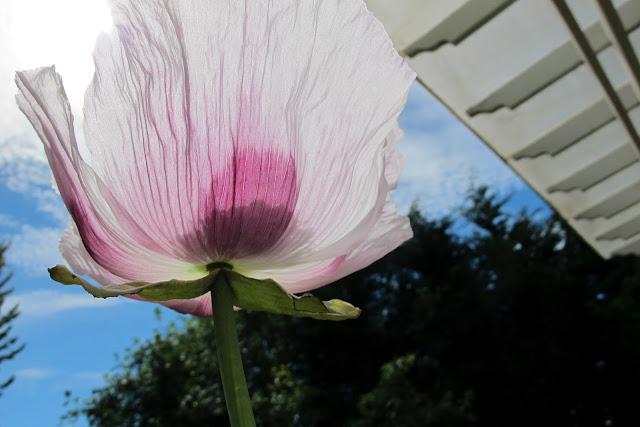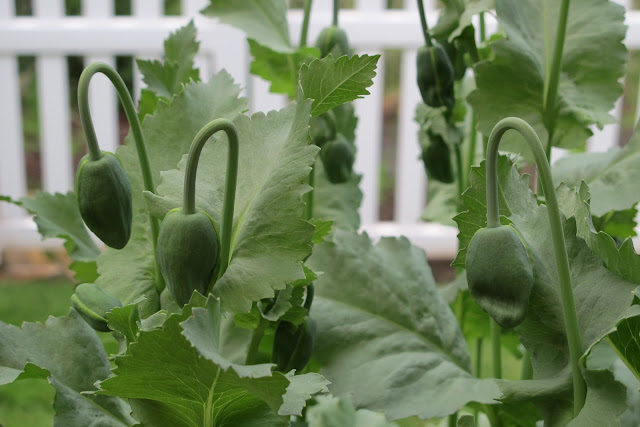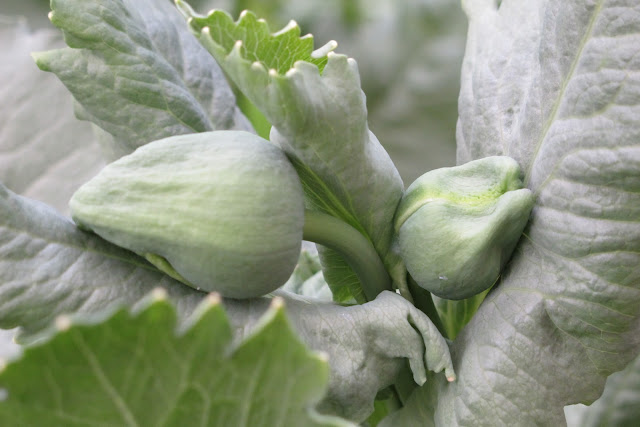IKKANSHU-MANIA Ikkanshu Tasmanian Poppy Hybrid
Master gardeners and scholars agree that two of the most sought
after poppies in the world are the Ikkanshu Poppy from Japan
and the Tasmanian Poppy.
 Ikkanshu Poppy
Ikkanshu Poppy - primarily found in pharmaceutical study
journals, this is probably the rarest poppy in the universe. Since most
gardeners have never even heard of it, it hasn't gained the popularity of its
other papaver somniferum sisters. Originally found only in
Japan,
a source of authentic purebred Ikkanshu seeds was almost impossible to obtain. The
majority of the information about this mystic flower is written only in Japanese.
Because of it's milky white flowers some (unscrupulous) sellers have sold China
White Poppy seeds and claimed that they were Ikkanshus. The blue - gray seeds
are one of the primary indicators that you are dealing with you are dealing
with the elusive Ikkanshu Poppy. The light beige ones are garden variety China
Whites. Luckily, I found a source of Ikkanshus that could be verified about 11
years ago.
 |
| Ikkanshu Tasmanian Poppy Hybrid |
Tasmanian Poppy - The world's pharmaceutical market has been
driven by this beauty for the past 60 years. Engineered to be hardy and potent,
the Tasmanian Poppy will survive in most environments. Usually identified by
its white petals with purple splotches, this powerhouse is easy to identify.
They may be easy to ID but good seeds aren't easy to obtain. The Tasmanian
Poppy industry is heavily guarded and regulated. My seeds were "blow
overs" that were purchased in
Tasmania
many years ago. I have kept the strain going and cross pollinated them with the
Ikkanshus.
Ikkanshu-Mania Poppy - I have been growing poppies for over 20 years and working
on this hybrid for the past ten years. After years of research, I realized that
blending two of the rarest poppies on earth might make for a wonderful hybrid.
The past decade has been dedicated to creating a poppy that would be potent,
grow multiple heads per plant, and be fairly easy to grow. The result is my
Ikkanshu-Mania Poppy.
Ikkanshu-Manias can be identified by their white / violet streaked petals with
purple blotches. Multiple stems will grow from the leave intersections to
produce flowers and post. Some plants will produce as many as 15 heads!
 |
| Up to 15 pods per plant |
The yield of these seeds is astronomically high.
Approximately 98% of the seeds are viable and will produce sprouts when planted
and cared for correctly. Your success is almost guaranteed as they are very
easy to plant and fairly easy to care for and nurture to adult pod producing
plants. Probably the most difficult stage of the process is during the 3 weeks
after they sprout. They need to be kept moist so that they won't dry out but
they are easily washed away if over watered. A little extra care and a light
water mister will get the job done quite nicely. Once they reach adulthood they
will each produce 6 to 10 flowers / pods.
A limited quantity of Ikkanshu-Mania seeds will be available soon.
Please DO NOT contact me to ask if I will sell you poppy pods of any type! I do not distribute pods of any kind.



















